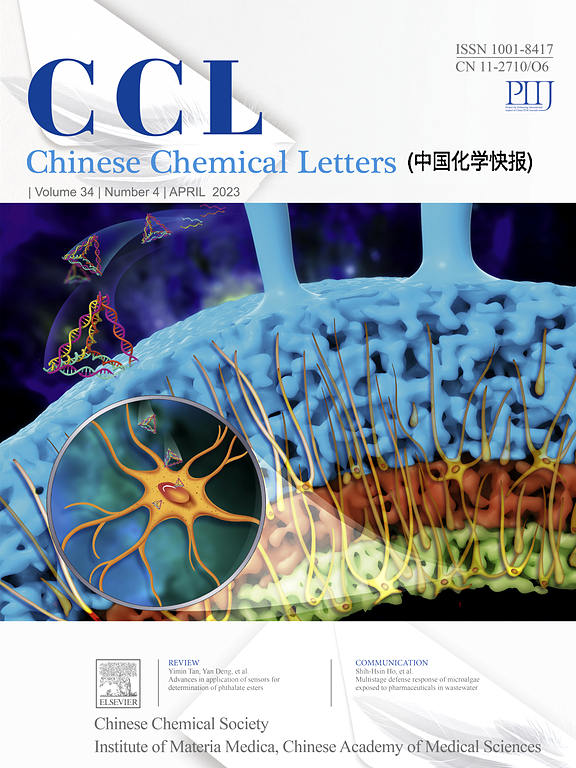Highly regioselective electrochemical oxidative 2,1-azolization of alkenes with azoles and nucleophiles
IF 9.4
1区 化学
Q1 CHEMISTRY, MULTIDISCIPLINARY
引用次数: 0
Abstract
The direct difunctionalization of alkenes serves as one of the most straightforward strategies toward complex nitrogen-containing compounds. The existing approach is extensively promoted by using C/X-centered radicals and N-nucleophiles to conduct 1,2-difunctional amination/azolization of alkenes. In contrast, 2,1-difunctional amination/azolization of alkenes by using nitrogen-centered radicals (NCRs) and nucleophiles still remains rarely underexplored. It is possibly due to the highly active electron properties of NCRs and the relatively poor nucleophilicity of aromatic NCRs to be trapped by arylalkenes. Herein, we demonstrate an unprecedented 2,1-hydroxazolization reactions of arylalkenes through electrochemically enabled addition of NCRs from azoles and nucleophiles (NuH) in high yields and with high regioselectivity. This conversion is characterized by the fact that neither metal catalysts nor external chemical oxidants are required. This electrochemical oxidation synthesis method can also be applied for a broad range of NuH including pyridine hydrofluoride, ammonia, water, alcohols, and acids which enables the formation of C-N and C–X (X = F/N/O) bonds in one-pot fashion to furnish efficient fluoroamination, diamination and oxoamination of alkenes.

烯烃与噻唑和亲核试剂的高区域选择性电化学氧化2,1-偶氮化反应
烯烃的直接双官能化是合成复杂含氮化合物最直接的方法之一。现有的方法被广泛推广,利用C/ x中心自由基和n -亲核试剂进行1,2-二官能团胺化/偶氮化。相比之下,利用氮中心自由基(ncr)和亲核试剂对烯烃进行2,1-二官能团胺化/偶氮化的研究仍然很少。这可能是由于ncr的高活性电子性质和芳香ncr相对较差的亲核性被芳烯捕获所致。在这里,我们展示了前所未有的2,1-羟唑化反应,通过电化学使氮唑和亲核试剂(NuH)的ncr加成,以高收率和高区域选择性的芳烯醛。这种转化的特点是既不需要金属催化剂,也不需要外部化学氧化剂。这种电化学氧化合成方法也可以应用于广泛的NuH,包括氢氟化吡啶、氨、水、醇和酸,可以在一锅方式下形成C-N和C-X (X = F/N/O)键,从而实现烯烃的高效氟胺化、二胺化和氧胺化。
本文章由计算机程序翻译,如有差异,请以英文原文为准。
求助全文
约1分钟内获得全文
求助全文
来源期刊

Chinese Chemical Letters
化学-化学综合
CiteScore
14.10
自引率
15.40%
发文量
8969
审稿时长
1.6 months
期刊介绍:
Chinese Chemical Letters (CCL) (ISSN 1001-8417) was founded in July 1990. The journal publishes preliminary accounts in the whole field of chemistry, including inorganic chemistry, organic chemistry, analytical chemistry, physical chemistry, polymer chemistry, applied chemistry, etc.Chinese Chemical Letters does not accept articles previously published or scheduled to be published. To verify originality, your article may be checked by the originality detection service CrossCheck.
 求助内容:
求助内容: 应助结果提醒方式:
应助结果提醒方式:


